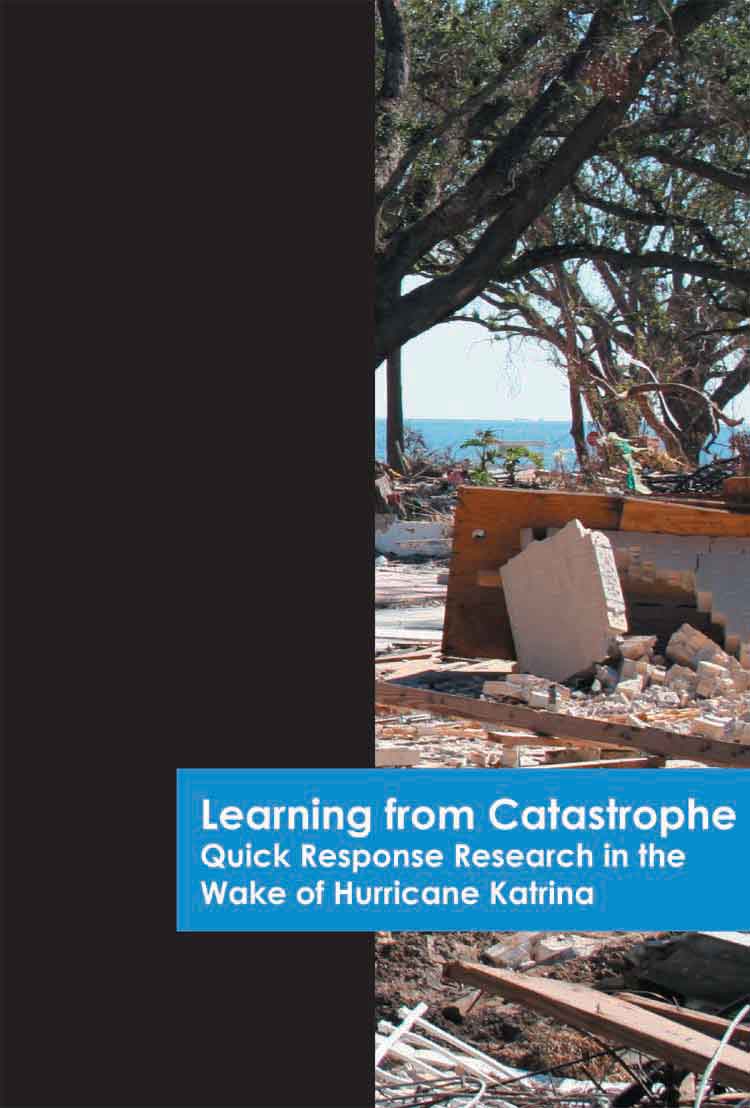Learning from Catastrophe
Quick Response Research in the Wake of Hurricane Katrina
 Special Publication #40 (2006, 472 pp.)
Special Publication #40 (2006, 472 pp.)
ISBN-13: 978-1-877943-18-8
ISBN-10: 1-877943-18-5
$25.00 (plus $5.00 shipping)
10% discount on orders of 10 or more
The printed version is available from our purchasing page.
Click here to view the table of contents in PDF format
A peer-reviewed edited volume, Learning from Catastrophe is a collection of 18 chapters from 39 researchers who conducted social science research during or immediately after Hurricanes Katrina and Rita made landfall on the U.S. Gulf Coast in September 2005. At that time, research teams were deployed under the Center's own Quick Response program, the National Science Foundation's Small Grants for Exploratory Research (SGER) effort, or through support of other various academic institutions.
Much of disaster research must by necessity be carried out in the aftermath of major events and it is therefore essential that each opportunity to be seized so that the appropriate lessons can be learned. The devastation and social and institutional failures wrought by Hurricanes Katrina and Rita, unfortunately, provided ample fodder for quick response research. Quick response studies are also important because they frequently identify research questions for future, longer-term research. Disasters inevitably bring surprises, and quite often those surprises turn into researchable topics.
Because of the multiple severe impacts and the utter devastation caused by Hurricane Katrina, rapid response field work was especially challenging-perhaps more so than in any recent U.S. disaster. Field workers witnessed catastrophe and its depredations first hand and are now bringing the human story of Katrina and its research and policy implications to a wider audience through the publication of this edited volume.
Learning from Catastrophe is produced by the Natural Hazards Center at the University of Colorado at Boulder.
